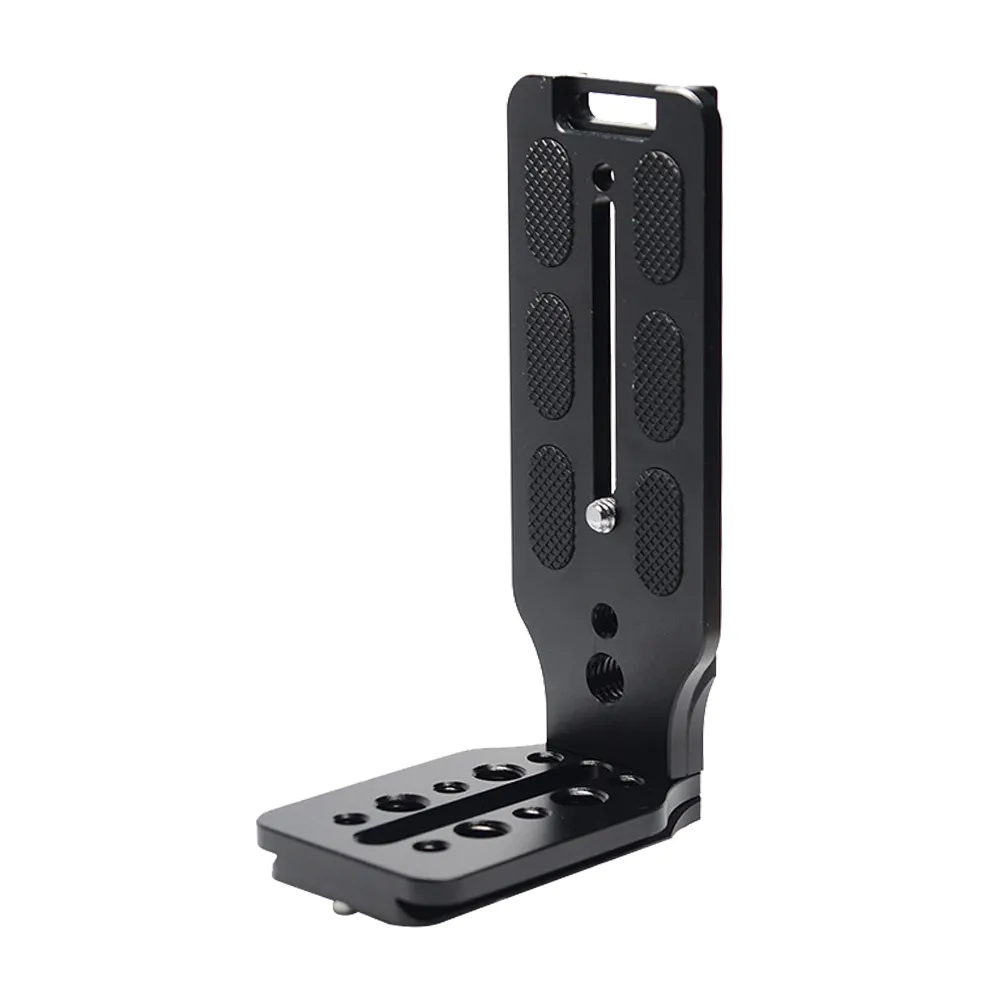

Time:2025-09-12 Views:1

The load - bearing capacity of quick - release plates is a pivotal specification that directly influences the safety and functionality of camera equipment setups. It refers to the maximum weight that a quick - release plate can support without compromising its structural integrity or the security of the attached devices. This feature is of utmost importance across various photography and videography applications, where the equipment's weight can vary significantly, from lightweight mirrorless cameras to heavy - duty cinema camera setups with multiple accessories.
Material selection is the cornerstone in determining the load - bearing capacity of quick - release plates. High - strength metals like stainless steel and aircraft - grade aluminum alloys are frequently employed. Stainless steel, with its excellent tensile strength and resistance to deformation under heavy loads, is capable of supporting substantial weights. For instance, a stainless - steel quick - release plate can securely hold professional DSLR cameras equipped with large telephoto lenses and additional accessories, which may weigh upwards of 10 pounds or more. Aluminum alloys, although lighter, offer a remarkable strength - to - weight ratio. Through advanced manufacturing processes such as heat - treatment, their hardness and load - bearing capabilities can be enhanced, enabling them to support cameras and lenses in the 5 - 8 - pound range, depending on the specific design and construction.
The structural design of quick - release plates also plays a crucial role in load - bearing. A thicker and more robust plate structure, with increased surface area in contact with the camera and the mounting base, distributes the weight more evenly, reducing stress concentrations. Some high - capacity quick - release plates feature reinforced edges and a solid - core construction. These design elements prevent bending or warping under heavy loads, ensuring that the plate maintains its shape and continues to provide a stable connection. Additionally, the geometry of the quick - release mechanism itself affects load - bearing. Precision - engineered locking components, such as large - diameter screws or robust locking levers, can apply greater force to secure the camera, enhancing the overall load - bearing capacity.
In practical scenarios, understanding the load - bearing capacity of quick - release plates is essential for preventing equipment failure. Overloading a quick - release plate can lead to loosening of the connection, causing the camera to slip or even fall, which can result in severe damage to the equipment and potential injury. For professional photographers working in studio settings with heavy - duty camera rigs, or wildlife videographers using long - focal - length lenses, choosing a quick - release plate with an appropriate load - bearing capacity is non - negotiable. Manufacturers typically provide clear load - bearing ratings for their quick - release plates, allowing users to make informed decisions based on their specific equipment weights and shooting requirements. By ensuring that the quick - release plate's load - bearing capacity exceeds the combined weight of the camera and accessories, users can have peace of mind, knowing that their equipment is safely and securely mounted.
Read recommendations:
Waterproof and Drop-Resistant Camera Handles for Action Cameras